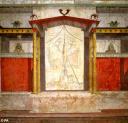That’s a Deadwood reference there in the title. I have nothing against the fine folks of San Jose.
Quite the opposite, in fact, since they’re bucking the trend and turning a parking lot into an archaeological excavation of a turn of the century Chinatown.
Starting on Tuesday, historians, archaeologists and two community members will spend 10 days digging on the block bounded by Jackson, Sixth, Taylor and Seventh streets. Their hope? To find a trove of post-1887 artifacts from the lost community that provided a rare sanctuary amid the anti-Chinese hostility gripping California.
Buried on the site may be evidence of how San Jose’s Chinese population indeed thrived – all thanks to an enigmatic German landowner who risked his livelihood to lend them a home. […]
In May 1887, when arsonists burned down the Chinatown where the Fairmont San Jose hotel now stands, 71-year-old John Heinlen stepped forward. He ignored angry mobs and fought an attempted injunction by city leaders to offer low-cost leases to build on pastureland he owned. Chinese were barred from owning land.
Chinatown stood on Heinlen’s land until the depression bankrupted him and the banks took over the property. Eventually the buildings were all razed and the city paved the block over with concrete. Until now.







